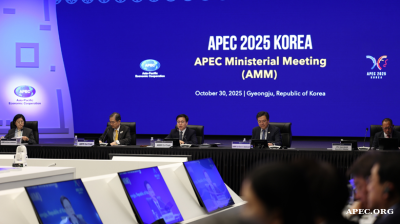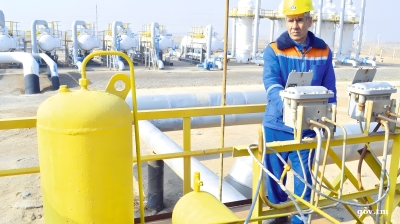Turkmenistan’s Galkynysh gas field is again centre stage. Ministers, company chiefs and international oil companioes converged on Ashgabat with a single proposition: gas remains indispensable to growth and energy security — and Galkynysh is the fulcrum of Central Asia’s pitch to supply it. “This is not just a resource,” said Murat Archyev, head of Turkmengaz. “It is an opportunity to provide energy security formns of people.”
The field is massive. Turkmenistan was already famous for having a lot of gas, with estimated proven reserves of 17 trillion cubic meters, according to BP's Statistical Review of World Energy. But Galkynysh and its satellite fields Yashlar and Garakel have just over 27.4 trillion cubic meters alone in in-place resources according to Gaffney Cline. Discovered in the Mary Province of Turkmenistan in 2006, that makes Galkynysh the second biggest field in the world, after Qatar's North Field.
Commercial exploitation began in September 2013, following the completion of the first development phase. Initial production focused on gas processing and export via pipelines to China, with early output reaching around 5.5bn cubic meters (bcm) annually.
Turkmenistan already exports 30bcm to China via the Central Asia Gas Pipeline, but now plans to double its exports with another 30 bcm form the Galkynysh field, either via a new Line D pipeline as part of the Central Asian pipeline network, or potentially via the TAPI pipeline that is planned to run through Afghanistan, Pakistan and India. The TAPI project is very uncertain, but the project took a decisive step forward after a decades of discussion and Turkmengaz just built the 14 km of the pipeline that will reach Herat in Afghanistan sometime next year.
Further out, Ashgabat and its partners are looking for other routes out of the region. “A new phase of cooperation” is how Rovshan Najaf, president of Azerbaijan's state owend energy company, SOCAR, describes Turkmen gas supplies to Azerbaijan that began in 2023. The Caspian, he argues, is emerging as a platform for a pragmatic transition in which molecules and electrons both matter.
SOCAR’s relationships with Turkmengaz and Turkmennebit have matured into a working compact: joint projects, an Ashgabat office, and a political cadence of high-level visits that entrench trust. It is an ecosystem play rather than a single asset bet.
Developing Galkynysh
Archyev’s blueprint is clear. First, complete the seven development stages at Galkynysh, where the first stage has an operational capacity of 30 bcm per year, and the next phases are advancing. Second, build 5 bcm of underground gas storage to smooth seasonal swings and guarantee delivery. Third, accelerate down-stream value: polymers, fertilisers, methanol and hydrogen. “We do not offer you a simple approach to huge resources,” he said. “We offer reliable partnerships built on mutual respect, transparency and long-term prospects.”
The state’s broader strategic line was reinforced by Turkmen energy officials speaking at the 30th anniversary Turkmen oil and gas conference OGT2025 in Ashgabat at the end of October. One official cast Galkynysh as a national cornerstone and an export engine able to “double” current flows by mid-century, while anchoring the TAPI pipeline — a 1,800 km corridor designed to move 33 bcm per year to Afghanistan, Pakistan and India. Scepticism persists, but “energy infrastructure is the most reliable tool for stability and prosperity,” bringing jobs, revenues and interdependence across borders.
If TAPI is one leg of the strategy, the Central Asia–China system is the other. A Turkmengaz intervention noted three operating lines to China carrying about 55 bcm per year, with a fourth (“Line D”) planned to lift volumes towards 85 bcm. In parallel, methane-reduction has been elevated from aspiration to execution: a national roadmap, collabouration with UNEP, deployment of digital leak-detection and “tangible” results already recorded in key facilities. “Energy security and environmental responsibility must be developed together,” the speaker said.
From the podium, moderator Maria Valerdes framed the discussion in monetisation terms. Galkynysh, she said, does not simply feed pipelines; it underwrites LNG options, hydrogen pilots, advanced methane-mitigation technologies and petrochemical chains that raise the value of each cubic metre produced. The panel would, she added, test what blend of finance, governance and technology can deliver the fastest, cleanest route from reserves to revenue.
On the geology, Tim Davis of Gaffney Klein was emphatic. “Galkynysh is unique — 27.4 trillion cubic metres of gas in place, and 580 metres thick,” he said, describing a rare confluence of scale, pressure and onshore logistics. That combination puts Galkynysh among “advantaged hydrocarbons”: economically attractive, “environmentally favourable” and technically simpler to bring to market than ultra-deepwater or frontier plays. Even if every net-zero plan is met, Davis argued, 30–50% of the 2050 energy mix will still be hydrocarbons. The task is to make them as clean as possible — by cutting flaring, fixing fugitive emissions and building infrastructure to move molecules efficiently.
The investment story is now inseparable from emissions performance. Turkmengaz and government speakers accented methane policy — not just because the IEA estimates up to 75% of oil-and-gas methane can be abated with existing technologies, but because roughly half of those measures pay for themselves when captured gas is sold. To investors, this is an “investment that brings both economic and reputational returns,” Archyev said. The government underscored legal guarantees for foreign capital — including free profit repatriation — and insisted Turkmenistan’s “open doors” policy applies across upstream, storage and gas-chemicals.
Connectivity dominates the politics. TAPI is an economic corridor as much as an energy asset. In Ashgabat, officials celebrated a new construction push on the Afghan segment and set out a timetable to proceed in 2025. On China, the case is straightforward: rising demand, proven pipe, and a well-understood offtake structure. The subtext is diversification: westward and southward options hedge market risk and strengthen negotiating hand.
Demand-side confidence is widespread. Dato’ Samsudin Miskon projected global gas consumption rising well into the 2030s and stabilising only by 2050, with gas overtaking coal as the leading primary energy source in the 2040s — a trend reinforced by data-centre-driven electricity demand. “Gas is the ideal transition fuel — abundant, reliable, flexible,” he said, and in power it emits roughly half the CO₂ of coal while leading to less local air pollution. For Petronas, net-zero by 2050 is a corporate target — but meeting it in Turkmenistan implies pairing production with efficiency, leak reduction and carbon-management pilots.
Features
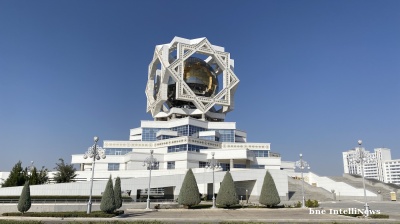
Washington has a new focus on a Caspian energy play
For most of the last three decades since winning independence, Central Asia has been a bit of a backwater. Not any more. The Trump administration is becoming more focused on Turkmenistan's vast gas reserves and can smell money and power there.
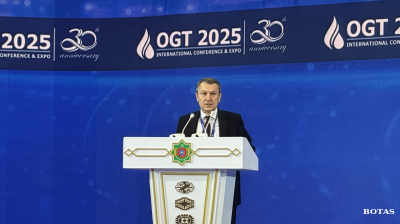
BOTAŞ and Turkey’s hub ambition: from “30-year dream” to cross-border reality
For Ankara, the symbolism is as important as the molecules: Turkey’s energy map is shifting from end-market to hub.

Indian bank deposits to grow steadily in FY26 amid liquidity boost
Deposit growth at Indian banks is projected to remain adequate in FY2025-26, supported by an improved liquidity environment and regulatory measures that are expected to sustain credit expansion of 11–12%
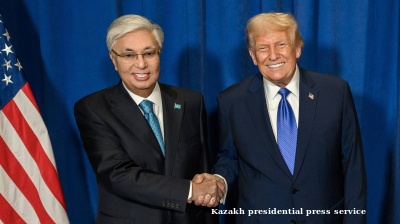
What Central Asia wants out of the upcoming Washington summit
Clarity on critical minerals and a lot else.
